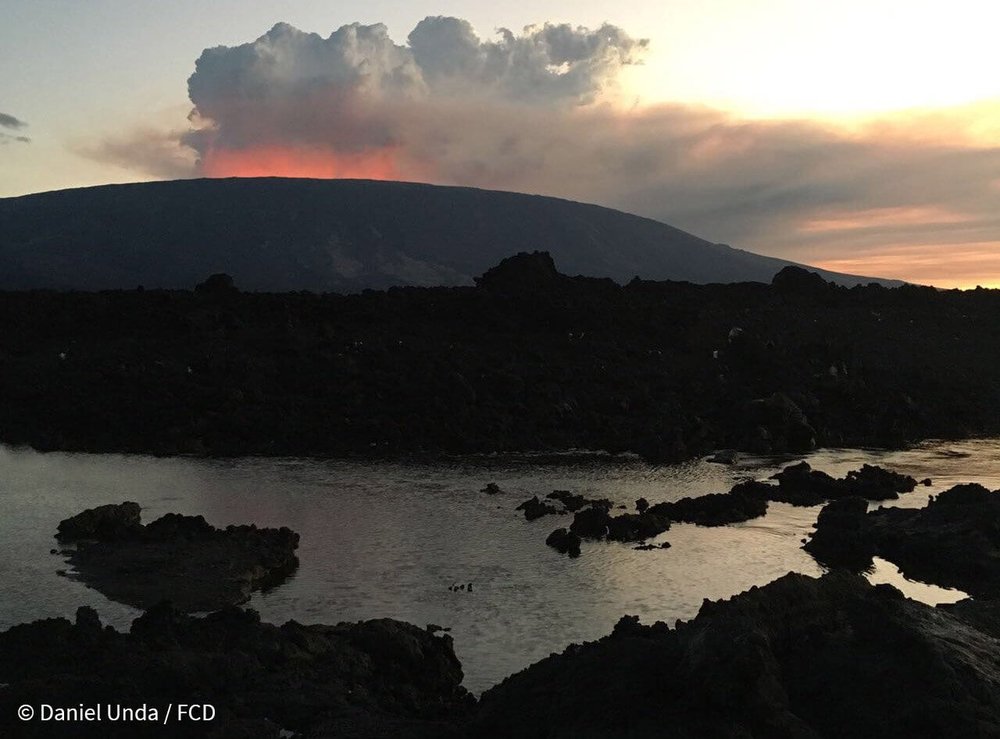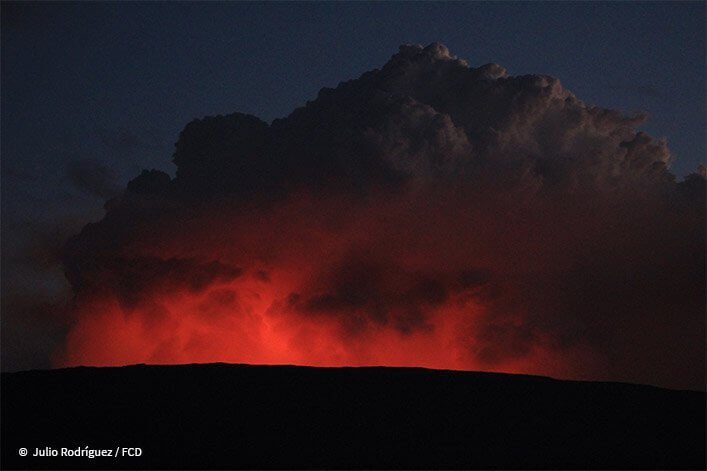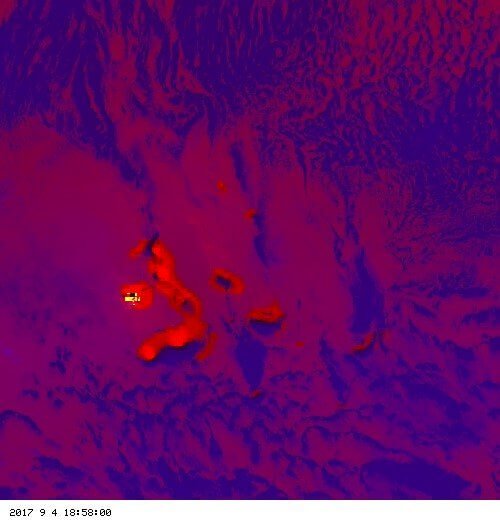
Fernandina Volcano began erupting on September 4 2017, at about 18:25 UTC (12:25 local time). This is not very surprising, because Fernandina erupts every few years, most recently in 2009, and before that 2005 and 1995. All of the recent eruptions have been on the southwestern flank of the volcano: there must be stress built up in the volcano that causes the magma to be directed there.
Modern communications are amazing. I started getting texts and emails from Galápagos friends on Monday afternoon, just hours after the eruption started. Pictures were appearing on Twitter and Facebook right away. When I started working in Galápagos, in the 1980s, we were lucky to hear about eruptions a month after the fact, by letter.

The eruption is pouring lava onto the west, southwest, and southern flanks of the volcano. Galápagos volcanoes have 2 types of fissures, laid out like a bike wheel. This eruption seems to be from a circumferential fissure, like the hub of a bike wheel. The 2005 and 1995 eruptions were from radial fissures, like the spoke of the wheel.
The first pictures of the eruption showed that the plume was very steamy. It is possible that the eruption began from the caldera floor, which hosts a lake, but we are not yet sure. A caldera is a large cavity in the top of a volcano, like a giant crater. Fernandina has one of the most impressive calderas of any volcano in the world, over 800 m deep.

Fernandina had a historically important eruption in 1968. It started out inauspicious, with just a little lava. But then lake water accessed the magma while it was still underground, and huge steam explosions ensued. Hot ash flows were emplaced to the coast of the volcano, and a 24 km high plume was produced. Explosions were heard and earthquakes felt throughout the archipelago. Parts of the caldera floor collapsed 350 m over 10 days. It is possible, although unlikely, that explosions due to the interaction of water and magma, could happen with the 2017 eruption.





